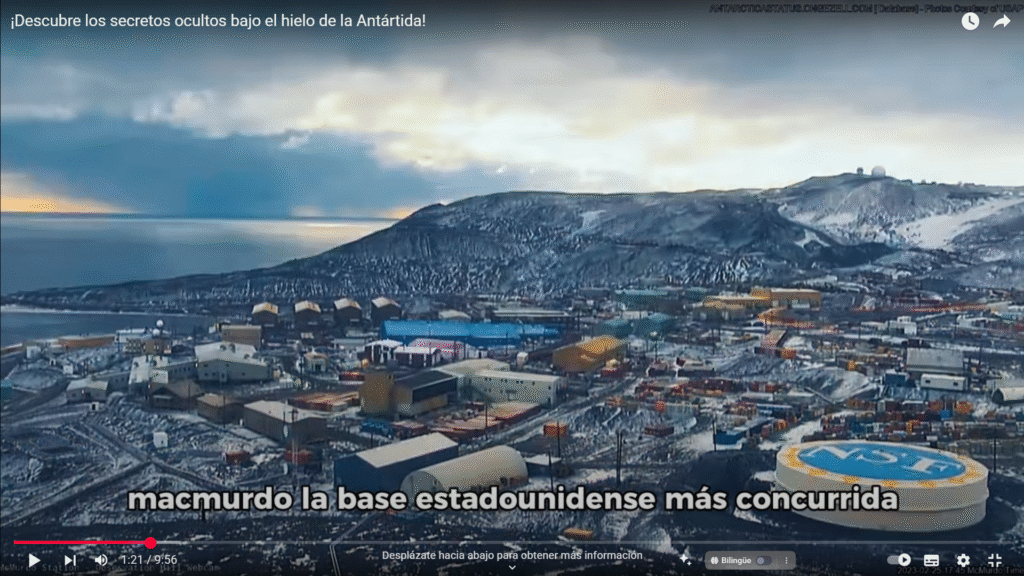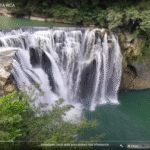Antarctica: A world hidden beneath the ice that could change what we know about the planet
When we think of the most remote corners of the Earth, Antarctica probably tops the list. That white, vast, and silent territory, which seems more like a scene from another planet than a part of our own, hides a reality as fascinating as it is unknown. Beneath its icy surface, where life seems impossible and solitude pervades everything, lie geological, biological, and climatic secrets that could redefine our understanding of the Earth… and even the universe.
Despite its desolate appearance, thousands of scientists travel to this continent every year in search of answers. What do they discover there? What makes this vast polar desert so special? And, more importantly, why should we pay attention to it?
Why is Antarctica so important and so mysterious at the same time?
Antarctica isn’t just ice and wind. It’s the coldest, driest, highest, and windiest continent on the planet. It has no permanent population, cities, or roads. Yet it is a point of strategic and scientific interest for the entire world.
During the southern hemisphere summer (November to March), more than 4,000 scientists and researchers are deployed across bases in various countries, including the United States, Russia, Chile, Argentina, Australia, and Italy. In winter, only a few remain, facing extreme temperatures that can drop to -60°C and weeks of darkness.
The scientific bases operating in the region are true self-sufficient fortresses: they have heating, power, satellite communications, and food reserves. The U.S. McMurdo Air Force Base, for example, can house more than 100 people in the summer. Others, such as Argentina’s Marambio Air Force Base or Chile’s Frei Montalva Air Force Base, also stand out for their infrastructure and contribution to scientific knowledge.
The most shocking thing about Antarctica: 5 revelations that few people know about
- Under the ice there is life… and a lot of history
- At a depth of more than 4 kilometers, subglacial lakes like Lake Bostock lurk, sealed from the outside world for millions of years. These lakes could harbor unique life forms, similar to those we might find on moons like Europa or Enceladus.
- It was a tropical rainforest
- Fifty million years ago, Antarctica wasn’t white. Fossils found there reveal that it had temperate forests and was inhabited by dinosaurs. Temperatures exceeded 17°C, and the ecosystem was green and vibrant.
- It has active volcanoes
- Mount Erebus, on Ross Island, is the world’s southernmost active volcano. In 1979, a tourist plane crashed there due to a phenomenon known as “whiteout,” which blurs the visual perception of the horizon. The tragedy left 257 dead.
- Strategic births
- Although there is no permanent population, 11 children have been born in Antarctica. All births were organized by the governments of Argentina and Chile with the aim of strengthening their territorial claims. Paradoxically, it is the only continent with a 0% infant mortality rate.
- It is key to the study of climate change
- What happens in Antarctica directly affects the rest of the world. Its ice acts as a thermometer for the planet. The accelerated melting of its glaciers could cause a drastic rise in global sea levels.
How to Visit Antarctica? 3 Real Ways to Reach the White Continent
- On a cruise from Ushuaia, Argentina
- This is the most popular option. The trip can last between 10 and 12 days and cost over $5,000 USD per person. It includes crossing the legendary Drake Passage, one of the roughest maritime zones on the planet.
- Flights from Punta Arenas, Chile
- A faster, but limited, option. Some flights allow you to land on ice runways and spend a few hours on the ground before returning.
- Tourist overflights from Australia
- For those who want to observe without touching. These flights don’t land, but offer unique aerial views of the Antarctic landscape.
Important : Antarctica can only be visited between November and March, when temperatures permit and the sea ice retreats.
Essential tips if you dream of visiting Antarctica one day
- Respect the environment : Leaving litter, touching animals, or disturbing the ecosystem is prohibited. Tourism is strictly regulated by international treaties.
- Be physically prepared : Although the trip is under controlled conditions, the cold can be extreme. It’s recommended to be in good shape and have the appropriate equipment.
- Choose certified operators : Make sure you travel with companies authorized by the International Association of Antarctica Tour Operators (IAATO).
- Don’t expect urban comforts : on most expeditions, you’ll sleep in boats or camps prepared for the terrain.
Is it worth visiting such an inhospitable continent?
It depends on your adventurous spirit, but the truth is that walking on a continent without cities, without traffic, without pollution, and where the horizon is endless white, is a transformative experience. Seeing emperor penguin colonies up close, whales feeding on krill, or skies of an almost unreal blue connects you with a planet that still holds untouched places.
Furthermore, in an era marked by climate change, visiting Antarctica is not only a privilege, but also a way to raise awareness about protecting one of the world’s last natural refuges.
The time to look south is now
Antarctica is no longer just a distant place talked about in documentaries. It’s a living thermometer of our planet, a natural laboratory, and a reservoir of secrets yet to be discovered. Whether you ever dare to set foot there or just watch it from a screen, what happens there affects you more than you can imagine.
Exploring its mysteries opens a door to Earth’s past… and perhaps to humanity’s future. And you, would you dare to discover the white continent?
Were you surprised by everything Antarctica hides? Share it with other curious people around the world and follow us to discover more hidden corners of the planet.



